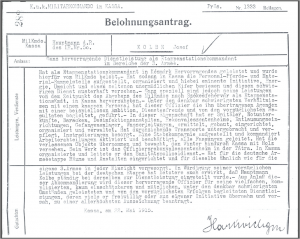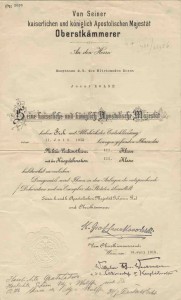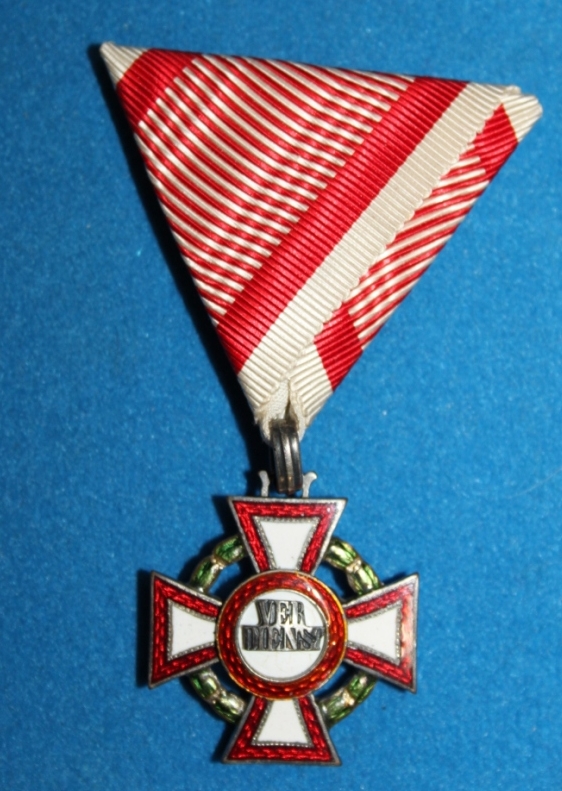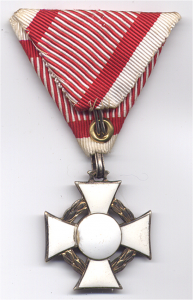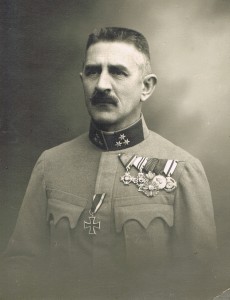The Military Merit Cross was instituted on 22 of October 1849 by Kaiser Franz Joseph on the suggestion of Field Marshal Radetzky as a distinction for especially meritorious service by commissioned officers in the face of the enemy. It underwent several revisions to its design and award criteria over the years of its existence and became obsolete in 1918 with the fall of the Austro-Hungarian Empire.
The medal itself was made up of a cross pattée of white enamel with a red enamelled border, approximately 30 mm wide, with a centrefield, 13 mm in diameter, ringed in red enamel and bearing the motto VERDIENST (merit) spread over two lines on the obverse. The reverse of the medal is of plain white enamel without an inscription. It was enhanced in 1860 through the introduction of the war decoration for exceptional deeds in the face of the enemy. This took the form of a green enamel laurel wreath on which the cross was set.
With the outbreak of the First World War, the decoration was reorganised into three grades, with the original Military Merit Cross becoming the new 3rd class. The latter was suspended on the tri-fold ribbon of the Bravery Medal, which is white with a centre design of red and white horizontal stripes bordered by two red vertical stripes.
Captain Josef Kolbe was awarded the Military Merit Cross, 3rd class, with the 3rd class war decoration, on 15 June 1915. The ribbon on his medal ribbon bar bears, however, the crossed swords, which were presumably awarded at a later date.
Sources:
http://www.austro-hungarian-army.co.uk/mvk.htm
http://en.wikipedia.org/wiki/Military_Merit_Cross_(Austria-Hungary)
http://de.wikipedia.org/wiki/Militärverdienstkreuz_(Österreich)

